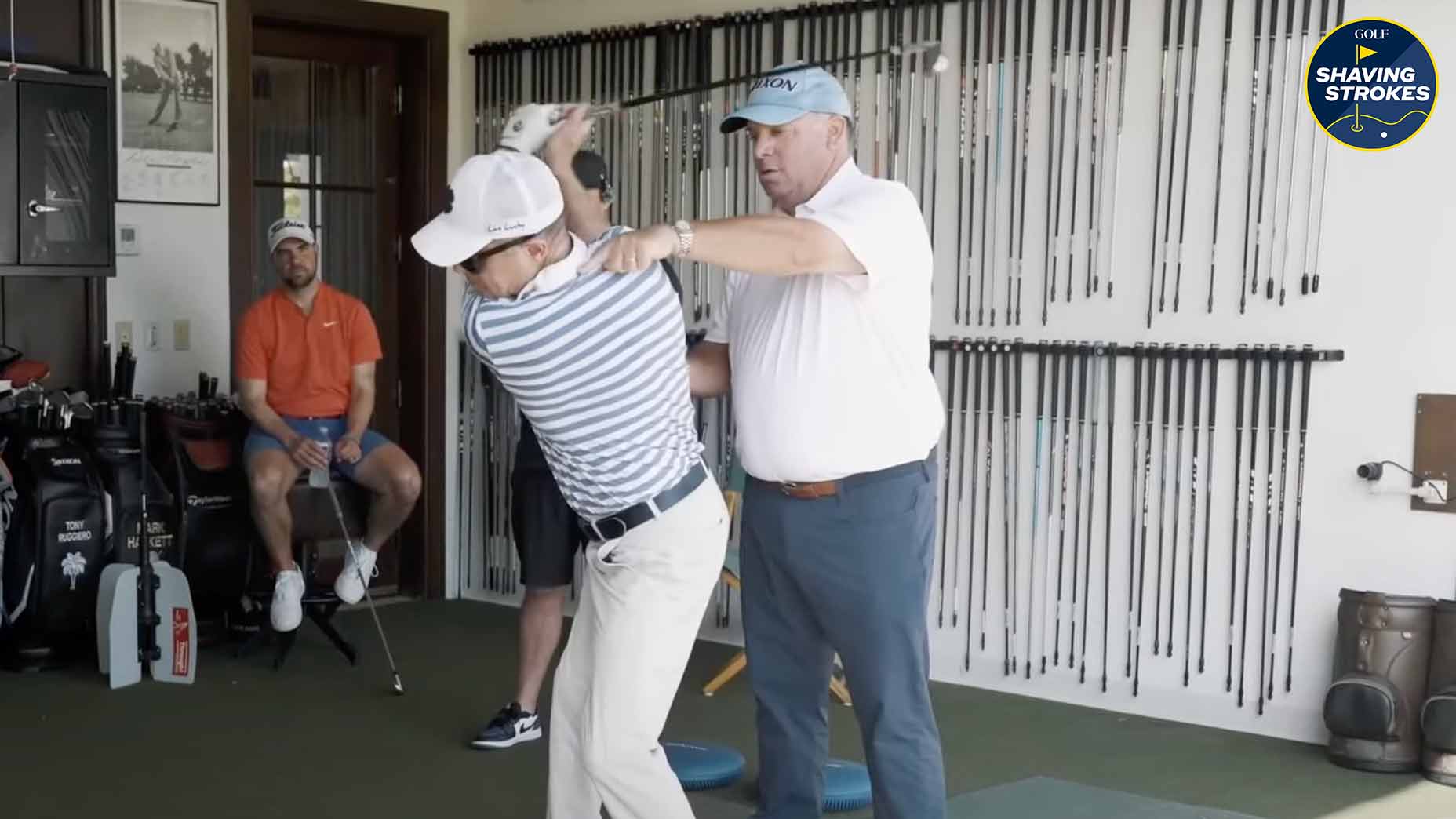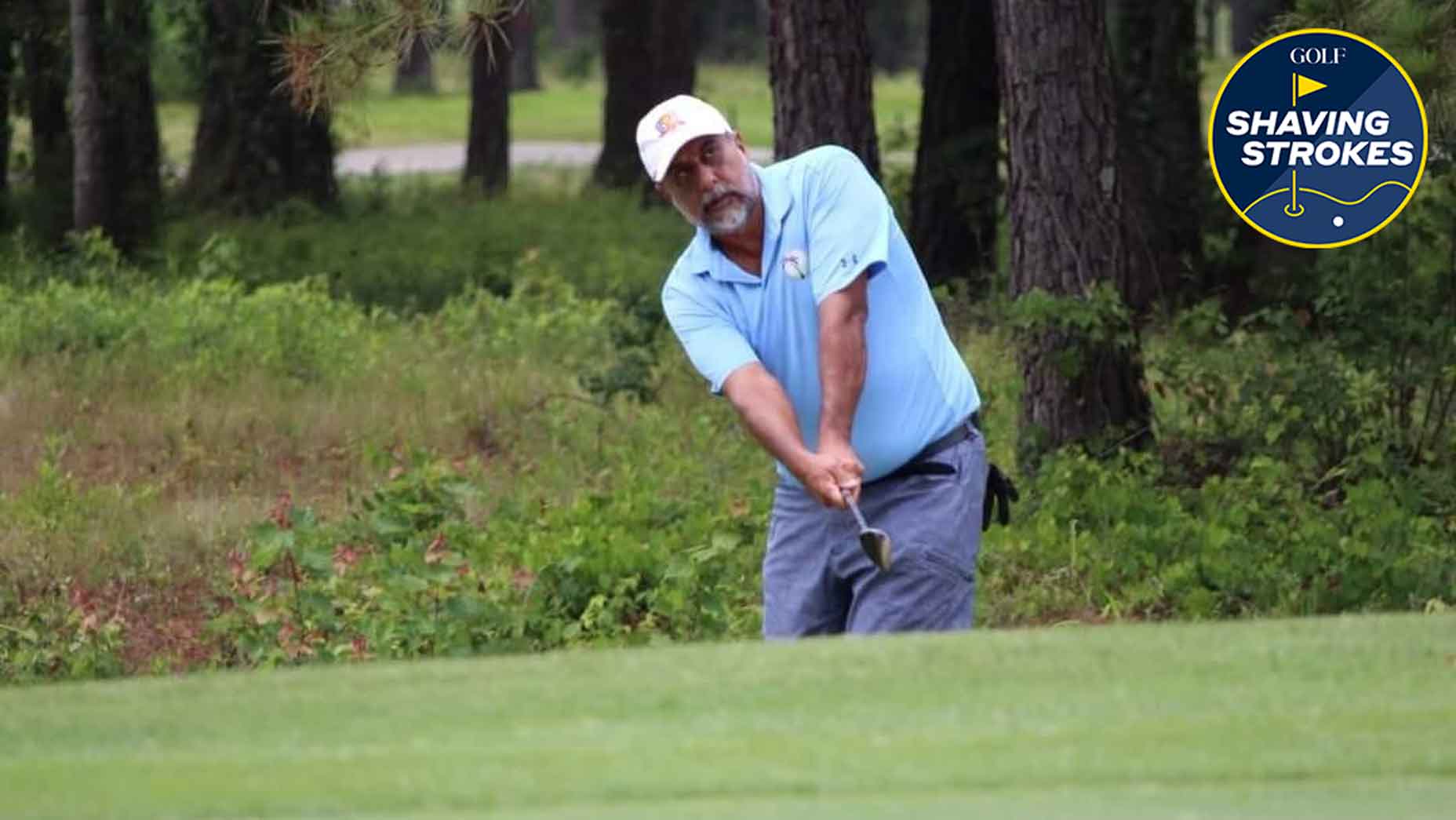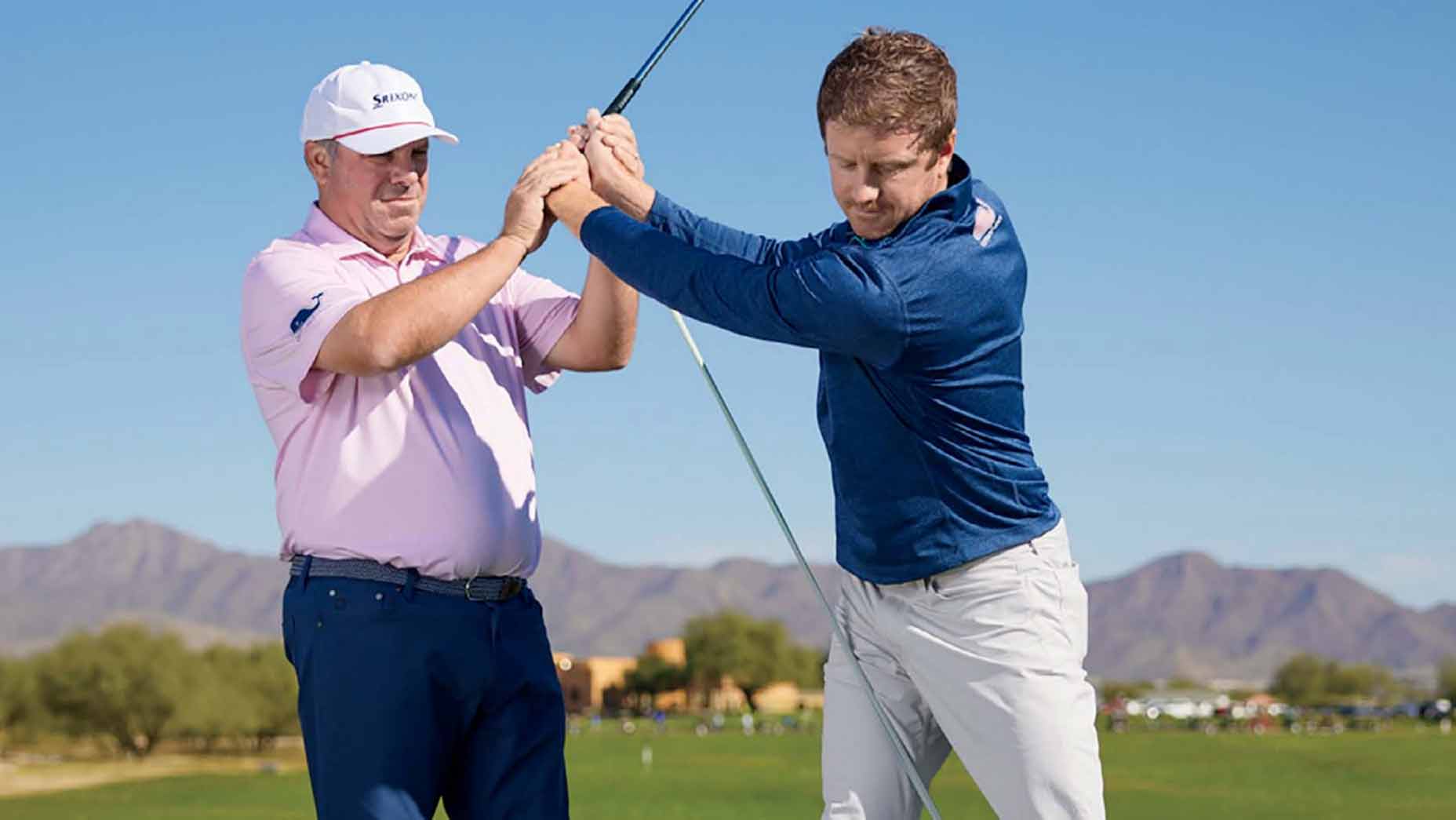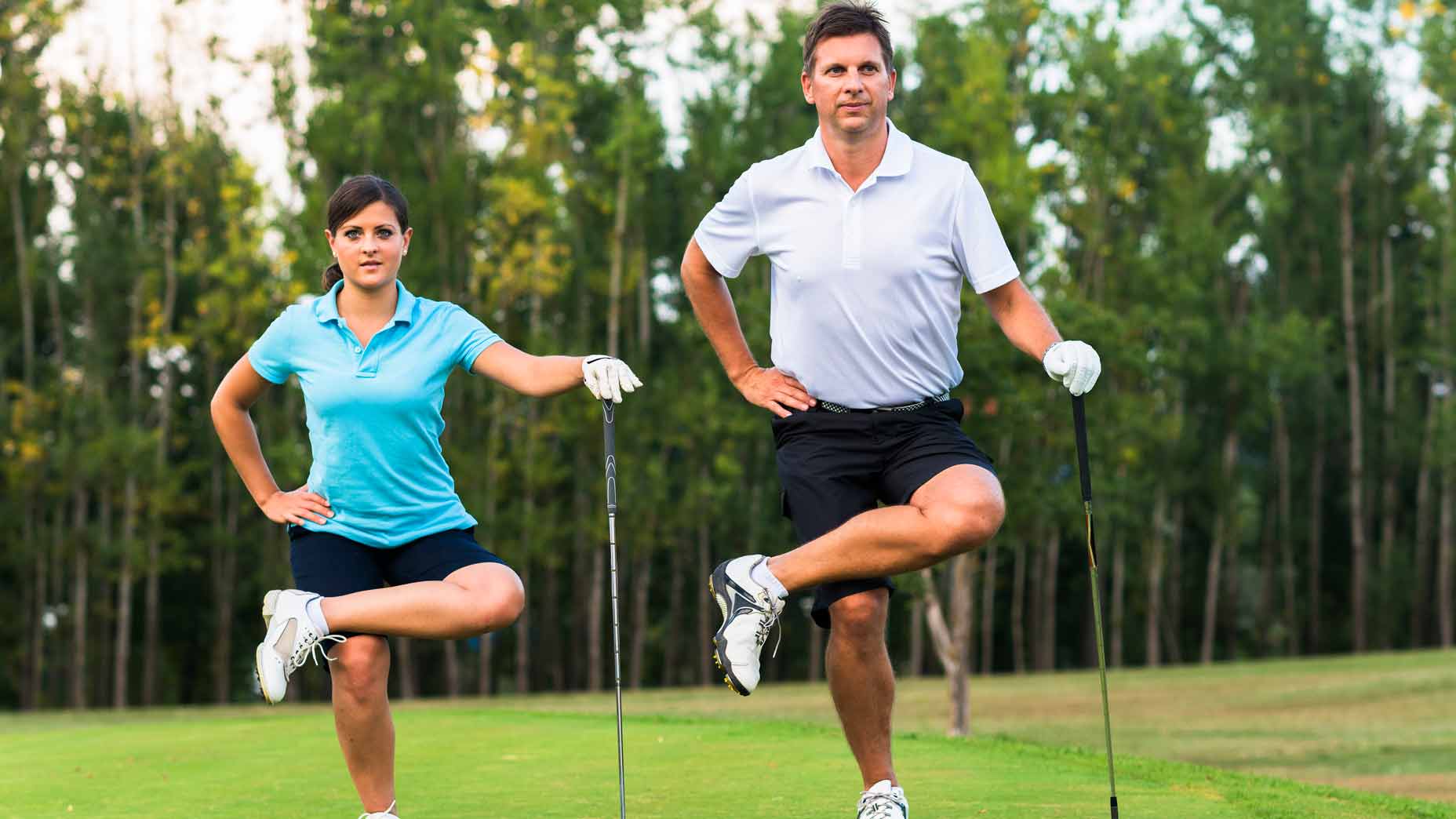Golf
This senior golfer went from shooting in the mid-80s to the mid-70s. Here’s how

After 18 months, this senior golfer shaved an impressive 10 strokes off his game.
Images via YouTube/TheDewsweepers
Welcome to Shaving Strokes, a GOLF.com series in which we’re sharing improvements, learnings and takeaways from amateur golfers just like you — including some of the speed bumps and challenges they faced along the way.
Shaving strokes off your golf game is a difficult thing to do no matter what your age is, but when you’re trying to make major gains as a senior golfer, it can be an even taller task.
Naturally, as we age, our bodies can’t perform like they used to. So many golfers lose the physical capabilities to rotate properly, swing hard, or simply just find the energy to routinely play a round of golf like they did when they were younger.
But that doesn’t mean every senior golfer’s just going to sit around and accept that they’re the player they currently are.
That’s what happened with a 53-year-old golfer named Fred, who decided to work with GOLF Top 100 Teacher Tony Ruggiero to improve his scores from mid-80s to mid-70s.
I recently caught up with Ruggiero to check in on Fred’s progress, and picked his brain on the steps he took to get this senior golfer to accomplish his goal. Check out how he did it below.
How this senior golfer shaved 10 strokes off his game
“When Fred first came to see me, he was like many golfers coming to a lesson. He was a golf fanatic who had struggled shooting in the low-to-mid 80s for years, and wanted to try and break 80 for the first time,” Ruggiero said.
With golf instruction so readily-available thanks to social media content, Fred dived into the depths of the Internet to try and fix his swing. Unfortunately, without a personalized plan, he continued to fall into the same bad habits, and became frustrated that he hadn’t been able to fix things.
That’s when he reached out to Ruggiero, asking him for his help.
“After a year-in-a-half together, Fred now regularly shoots in the mid-70s and has completely changed his whole game,” Ruggiero tells me. “We used a more unconventional approach, but it’s proven to work for him.”
So what was Fred’s recipe towards better golf? Ruggiero explains below.
Fix the cause, not the symptoms
Fred couldn’t stand the way his backswing looked, as he lifted his arms and bowed his wrists excessively at the top. He had tried to fix this for years without success — so we decided to attack the root cause of the problem.
First, we identified why his arms lifted and why the wrist bowed so much, since fixing the cause is key for real development. Too many students chase symptoms and try to fix things cosmetically with little results.
The reason Fred lifted was because he didn’t wind up his upper body, load into his trail hip correctly, or properly hinge his wrists. When this happened, Fred would lift the club with little to no body turn, producing the look he disliked. It also robbed Fred of critical power in his swing.
Can the student physically do what’s being asked?
We identified what was happening in Fred’s backswing, now we needed to fix why it was happening.
In Fred’s case, he was lifting rather than loading for two reasons: First, he didn’t have the mobility or stability in his right side to turn and load, and second, he didn’t know how to do it or how to make the correct movement.
During one of Fred’s visits to see us at Old Palm, we had him work with Kolby Tullier and Aaron McConley, who identified some physical issues in regard to his strength and mobility. The beauty here was that the drills and exercises Aaron gave Fred resembled the motions we wanted him to do in his swing.
Doing these drills helped Fred when he practiced by making him stay focused on one thing, the main thing, and helped him learn the now movement. When Fred would go full speed with a ball, he’d just do his old lifted backswing because that’s what he knew how to do. However, by doing reps in the gym with no ball and by doing drills and swings at slow speeds on the range, his practice became better and his contact and speed improved dramatically.
Practice to improve performance
The work Fred was doing on the range and in the gym was beginning to pay dividends after a few sessions together. However, he was still having a hard time producing the results on the range or on the course.
That’s where Dr. Greg Cartin comes in. Doc is one of the best in the business, and we’re fortunate to have him be part of our team and our retreats at Old Palm.
As Fred and Greg talked, one key that really came out of their work was having Fred think less about technical parts of the swing when practicing. Instead, Doc had him focus more on the feel of what he was doing. He helped Fred think about what it felt like when he made his better swings, helping differentiate between his old move and his new move.
The more focus Fred put on turning and loading up, the better he was able to replicate it on the course. One mistake golfers make when working on something in the golf swing is that they focus on positions and mechanics and try to be perfect. So Greg and I worked with Fred on learning to figure out what his new swing felt like — despite it being uncomfortable at first.
It takes more than a golf swing to lower your scores
Lastly, we assessed Fred’s scoring and found that, while he was really starting to hit the ball better and farther, he was losing shots around the greens — especially some of the easier and more simple up and downs.
Inside of 50 yards was dooming Fred’s game, so we needed to figure out a way to shave strokes from that area of the course.
To fix this, Fred spent some time with fellow GOLF Top 100 Teacher Mark Hackett, who fixed his setup and simplified his approach when playing shots from around the green.
Mark gave Fred a process to analyze the lie of the ball, see what shot was best, discover how to setup to play the shot, and lastly, how to practice these shots in order to prime himself for these scenarios on the course.
When you’re a player who’s looking to shave strokes, it takes a plan — and a committed student. In Fred’s case, he trusted the process and understood why it takes more than fixing the golf swing to go from shooting in the mid-80s to the mid-70s.
With different resources — from the swing fundamentals to the physical to the mental and to specialized situations like the short game — our team was able to guide Fred to reach his full potential as a golfer, and have him accomplish a goal he had always hoped for.
Bushnell Golf Launch Pro Launch Monitor
$3499.99
Tour-level accuracy both indoor and out. Capture club and ball data for industry-leading performance insights. Experience everything Launch Pro has to offer your game by adding our Gold subscription, Awesome Golf, GS Pro and more!
Note: Subscription and 3rd party connectors sold separately
Accuracy Above All
Launch Pro delivers unmatched precision and reliability both indoors and outdoors. You can now practice any aspect of your game anywhere, anytime you want.
We measure what matters, and we do it with the most accuracy and consistency of any personal launch monitor. Carry distance, clubhead speed*, launch, spin, when you know your number, you can take your practice sessions and performance on the course to the next level.
Launch Pro gives you true-to-life simulation and lets you enjoy the best of both worlds by allowing you to play on the world’s best courses and dialing in your game on the range. Whether you want a basic setup in your garage or a custom indoor simulator room, Launch Pro is the answer.
Additional Information
Includes 14-day free trial of Club Data* and Gold Software Learn More
Software subscription sold separately.
FSX Play available in Gold software subscription
NOTE: Gaming-optimized PC and TV Monitor required for simulation. Sold separately.
NOTE: Device will not work outside U.S.
View Product








)






